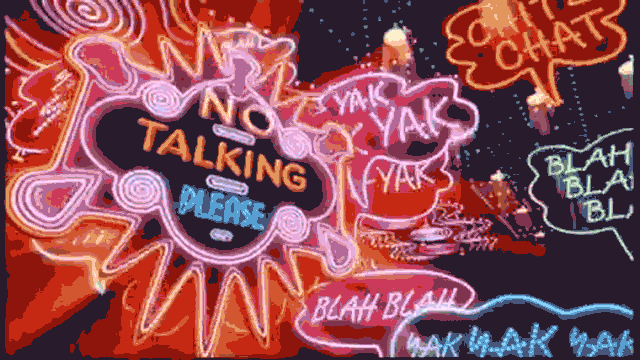What's Your Approach: Justin Windle
by Carl Camilla Lane

This post is sponsored by Levi’s. Find out how you can make your mark here.
Meet Justin Windle, an interactive creative developer who creates boundary-pushing, experiential digital work, currently at the Google Creative Lab. Justin’s work in the digital arts community not only utilizes, but progresses and reforms some of the most cutting-edge technology available on the market. His Chrome Experiments have become some of the most referenced and impressive pieces in terms of innovation and advancement for what is possible on the web today. In his free time, Justin is an active contributor to other collaborative projects such as the Levi’s® #MakeOurMark interactive social project.
Here Justin describes the Chrome Experiments project, which he calls The Engine, in his own words:
“In the past, the processes that formed an object were often evident in the object itself. Today, process is often hidden behind a veneer — behind ever smaller circuitry and glowing screens whose pixels appear contiguous. The Engine will attempt to illuminate the enigma of meaning, creativity and engineering in the text and audio submitted by its participants by creating a realtime — and potentially infinite — kinetic visualization…”
Like other artists who cut their teeth in the digital space, Justin’s approach to his work is defined by openness and collaboration. Many of his projects, for example, are open source and freely available online for anyone to build on or manipulate. On Justin’s personal blog, he claims his aim is to “provide a platform for sharing work and ideas and, wherever possible, provide source code and information to support this dialogue. He maintains that “this policy of openness and sharing promotes a healthy progression within whatever disciplines one might work.”
If you haven’t already checked out Chrome Projects series yet, you absolutely should. You can manipulate the flight patterns and inclinations of a digital flight of birds, or create your own recursive root structure. By fiddling with various tools and variables on a control panel at the top left of the screen, your browser becomes a kind of canvas for unexpected and wonderful visualizations.
It’s not a coincidence that these two examples of Chrome Experiments happen to draw inspiration from the natural world. Digital art, after all, is an excellent tool for testing how discrete variables interact with each other to affect systems. Users can determine, for example, the degree of cohesion or separation within a simulated flight of birds in the case of flocking, or the thickness and density of root structures in “Recursion Toy.”

“Recursion Toy”Creating a pretty visualization is one thing, but the boundary-pushing work happening in the digital space today isn’t relevant simply because of its design implications. Instead, digital experiments like Justin’s are relevant insofar as they help us generate new meanings, ask better questions, solve problems and explore new frontiers yet to be discovered.
Justin’s latest effort is an interactive social project — in collaboration with Levi’s — wherein social media users submit tweets and Soundcloud recordings to the #MakeOurMark and #Approach hashtags, answering the question: “What’s your approach?” The submission could be a simple tweet or an individual statement of purpose. It could be an audio recording, or even an original composition. As the community responds, their submissions will be gathered forth to create a “realtime visualization that showcases the diverse characteristics of the words and sounds themselves.”
Collaborate on this project by hashtagging #MakeOurMark #Approach through Twitter and Soundcloud. Learn more and get involved with the global art projects at levi.com/makeourmark.
New York's Saddest Man Celebrated For Acts Of Predictable Vacuity
“He has braved the Nevada desert for Burning Man, been trampled by a bull in Pamplona, lived it up at Mardi Gras and partied just steps from Kim Kardashian and Kanye West in Miami.”
— God, everything out there today is just so depressing.
Oh Boy, New Invention Heals Itself, What Could Go Wrong Etc.
https://www.youtube.com/watch?v=5Hiu80HDybk
“After slicing a tube of gelatinous material in half with a razor, researchers stick the two pieces back together again. After they’ve sat together for two hours at room temperature, the pieces are impossible to pull apart. The material, a new invention, has healed itself.”
— Years from now, when you and your family are running through the post-apocalyptic wasteland that our planet has become, you will be able to pause, during a brief respite fleeing from the self-regenerating mutant monsters that are hunting down the last remaining humans and sucking out their internal organs for sport, to tell everyone how you saw the things that are now attacking you when they were just tiny tubes in a lab. Then something will sneak up and grab you from behind and extrude your insides with one of its chemical tentacles before swallowing them whole. There’s a lot to look forward to.
Dread Ample
“Something is happening that I never could have imagined: a metropolitan life with a level of dread that is subsiding. Some people say they’re worried that a life without dread will lose its savor. I tell my students and people I know not to worry. If they just scrutinize their lives, they will find grounds for more than enough dread to keep them awake.”
— Marshall Berman was 72.
Biking Through The End Of Days
“The man put the boy on the handlebars of the bicycle.
It had once been blue. Streaks of cerulean remained in the spectral lines of dulled gray aluminum. It was heavy and his leg ached as he pedaled.
Who used to ride this bicycle, Papa?
No one person rode this bicycle. The bike was shared by everyone who could pay.
Did the people who shared the bikes carry the fire?
They thought they carried the fire.”
I Can't Imagine How This Mistake Happened
“Ray Charles was once a guest at New York’s Carlyle hotel and was prepared an off-menu steak by the staff at 3 a.m. An article on the hotel in the September issue of WSJ. Magazine incorrectly said it was Stevie Wonder.”
Bill Thompson Apparently Will Concede This Morning, So Please Welcome Mayor Bill de Blasio
Today Andrew Cuomo (remember him) is going to trot out Bill de Blasio and Bill Thompson, according to Capital New York, and, according to a pretty crazy tweet by The Amsterdam News, at that event Bill Thompson is going to concede the race and endorse de Blasio. And then, essentially, we have a mayor of New York City. (Unless something completely crazy happens to encourage New Yorkers to suddenly become Republicans by election day? Don’t even think it.) Well it’s been fun. But not really that fun.
Sources to the AmNews have confrirmed that Bill Thompson will concede today at 11am to avoid a runoff and endorse Bill de Blasio
— Amsterdam News (@NYAmNews) September 16, 2013
Twitter And The Death Of Quiet Enjoyment

On Monday, a movie-blog entrepreneur was tucking into a Toronto International Film Festival screening of a horror pic, when, to his actual horror, a fellow screenee was fiddling with his or her cell phone. Alex Billington went straight to film fest officials to complain.
They also claim that I am the only one who has ever complained about cell phone use at TIFF. So it’s now a major campaign to take action.
— Alex Billington (@firstshowing) September 9, 2013
The major campaign undertaken by Billington was a call to 911. It was a short campaign, as “the dispatcher laughed” at him, although Billington said that his complaint was that the cellphone person was pirating the movie and not that the cellphone person was distracting Billington, but nevertheless the story blew up briefly.
This made for a surreal chapter in a heated ongoing conversation, inspired in part by a venture capitalist suggesting that a selection of movie theaters be made available to accommodate those who wish to be active with handhelds and other digital computing devices during films. This inspired a robust conversation that captivated the imaginations of perhaps dozens: the Shushers vs. the Anti-Shushers. Like many a chair fight masquerading as a robust conversation, the sides coalesced and opened fire, and when the smoke cleared little was resolved; it was established that people disagree, and that the disagreement had a bit of a generational tint, the Millennial-ish Anti-Shushers vs. the geezer Luddites. After a couple days it began to feel like arguing over whether the toilet paper should go over the roll or under the roll.
But this conversation won’t die, and the Shushers are nodding appreciatively, while the Anti-Shushers are laughing at the absurdity of calling the cops on a movie theater nuisance. As before, everyone is right and everyone is wrong, and while they think they are talking about How You Should Do Something, they are instead dancing around How We Do Something. The implications of this elision are a bit unsettling.

Let’s borrow a legal term: quiet enjoyment. You’ve seen it in every lease that you’ve signed. It means, essentially, the ability to exist in a state of non-disturbance. As long as the lease is valid, the landlord is guaranteeing the tenant the right to occupy the dwelling in peace, without unreasonable nuisance, be it from the landlord or from third parties. It makes sense; that’s a state for which the tenant is ponying up.
So take that “enjoyment” and make it a lot closer to what we think of when we think of enjoyment, and what you get is what the Shushers are seeking. Quiet Enjoyment is the source of that admonishing in the policy trailer that runs before the feature that goes something like “Courtesy is contageous!”
There are, and have always been, exceptions to Quiet Enjoyment, as it is the preferred mode of consumption of all media and experiences. Sports would be the obvious exception (other than golf and tennis), and certain genres of movies and TV offer up experiences where the expectation of Quiet Enjoyment is not the default. Horror films engender a less passive atmosphere, and your basic midnight movie screenings, be they Rocky Horror or Showgirls, are not intended to be peaceable. There are cultural norms, both within the U.S. and outside, in which Quiet Enjoyment would be alien. But, having delineated these qualifications, let’s agree there has been an American tradition of Quiet Enjoyment in certain experiences, at least historically. Historically, in the sense of that time that predates the prevalence of personal, portable computers and instant connectivity.
We’re likely on the edge of the next shift. At the end of this month, Samsung’s Galaxy Gear watch comes to market. It’s a watch that’s a phone, a calendar — and a video, picture and audio recorder. The Sony SmartWatch 2 comes along shortly as well. The smartphone and phablet era has been tough on QE at the movies, but soon comes an era of wrist-mutterers.
It’s like that “joke” that everyone old enough to remember rotary phones thought up simultaneously, the first time they encountered a person in a public place — walking down the sidewalk, in line at an ATM — having a conversation via a mobile phone: “Why, without close inspection, it’s impossible to distinguish that person from an escaped lunatic talking to himself.” People communicate everywhere, because they can. The future is here, a future in which everyone talks to everyone else near-constantly.
“Shutting the barn door after the horses have already left” is also something people often say with regard to hurtling creep of technology, but it’s actually not that apt. Conceivably, in the world of farm management, horses can be found and “rounded up” and restationed in the barn. Technology doesn’t really undo itself, until it is supplanted and then repurposed purely for irony. (Do any of the food stalls at Brooklyn’s food flea market Smorgasburg use Slimline phones to talk to each other? If not, why not?)
Consequently, Quiet Enjoyment is now a bit less quiet. Between the Tribble-like proliferation of communicative gizmos (watch “I Forgot My Phone” and have a good cry) and a generation that has been raised watching movies, not in hushed movie theaters but in rec rooms, Quiet Enjoyment has lost cachet, and as it diminishes, the presumption of Quiet Enjoyment starts to come off as unctuous.

The Anti-Shushers are not actually arguing for a fundamental right to intrude. They are not proposing that every movie theater be disproportionately illuminated by the ominous glow of enormous Android screens, and polluted by the muted beeps and boops that mobile computer users grow immune to hearing. What they want is something I think they would instead describe as: the right to be connected. More specifically, they are standing up for their right to have a conversation — face-to-face with their friends — or a broadcast — Twitter account to Twitter followers — at pretty much all times. (This fear of isolation has actually gained the honor of now having a phobia inspired by it.)
So although it’s more amusing to label them the Anti-Shushers, it’s more apt (and less judgmental) to call them the Conversationalists.
The phenomenon is IDed in this brief sentiment from critic Richard Rushfield: “Towards a Unified Field Theory of how the Internet Makes Everything Terrible.” It was written on the occasion of the morning after the premiere of the first episode of the final season of “Breaking Bad.”
…I think there is something terrifying about the way the internet turns out for these events and cranks up the GIF, meme, Tweet and think piece machines like some sort of disembodied 4th of July parade. These moments carry a desperation with them; the logical conclusion of the Bowling Alone thing, where now living our lives glued to our individual screens cut off from actual human interaction, we are desperate to find ways to march together. I’ve noticed that these events — awards shows, series premieres, etc. — are becoming bigger and bigger of group phenomenons. Super Bowl ratings have never been higher. The Grammies for chrissake inch upwards. We want to watch together. In our own homes, in front of our own multiple screens.
From there it goes into prescriptive mode, and could perhaps be subtitled “Here’s To Shutting Up.”
You’ve seen it yourself, of course, and most likely have participated in it. Certain shows dominate the social media feeds. Some of that is arranged by the shows and their advertisers, as you know if you have responded to the request to “please start your second screen experience now.” But you know the shows that dominate the social media feeds. They are popular. They are recapped. They are usually renewed by the networks. They are not “Duck Dynasty” or “Storage Wars,” two basic cable programs with higher viewership than the average critic’s darling (except “The Walking Dead”, which was the most popular basic cable program of 2012). But when these shows we’re talking about are broadcast, fans discuss it. Digitally. Like they are in the same room, one very big room, hosted in the cloud. It’s swarm-watching.
A characteristic of the way that we apparently always wanted to consume entertainment, however we arrived at it, involves the need to converse, the need to share, the need for at least the illusion of being heard.
We want to be alone, but included. Actually, most importantly, we want to be included, and in fact we cannot properly enjoy the viewing of our favorite (broadcast, and not Netflix’d) TV shows unless there is a conversation in which to be included — even if the “conversation” is a tweet left hanging in the wind.
There is a deep vein of loneliness and longing in the inability to watch television without tweeting that is not unknown to anyone that attended junior high school. The mirror image of “JOIN THE CONVERSATION” is that there might be a conversation, a really good one, but certainly one from which you might have been excluded. Maybe the exclusion is due to the excludee not being online at the right time — Twitter and its imitators are located in the present, and good luck going backwards — or maybe the voice in the wilderness on Twitter or similar services is just unable to find an audience. But the statement is still there! It’s the Internet! Any posting is, by default, global; that is the reach of the web. Best case is you have an online affinity group that ratifies and acknowledges that such a viewer-commenter has something to offer! Worst case is that the viewer-commenter is screaming into a void. Part of the scream is, “Please include me in the conversation about this television show that has worse numbers than ‘Duck Dynasty’ but people JOIN THE CONVERSATION so whatever!” The other part is just: “please include me.”
Because the dirty secret of JOIN THE CONVERSATION is that you, the viewer-commenter — should you choose not to join this particular conversation — may be having a subpar conversation. The less important conversation. The beta conversation. Take the ordinary, everyday dislocation of modern life, and throw in a mean streak of anxiety.
It’s about fellowship, of varying degrees, which is to say that it’s about loneliness. A really scary loneliness. Not like: will you die alone and unloved? More like: will your existence go unvalidated in the 42 minutes of entertainment you’re about to consume? Maybe those are the same question, just contextually different by degrees.
So the Conversationalists, in their mild campaign against the Shushers, maybe are less respectful of those who wish to Quietly Enjoy the hypothetical movie in the movie theater because the Conversationalists’ version of Quiet Enjoyment has little to do with being alone, or even alone-at-arm’s-length. The Conversationalists don’t see the distractions of social media as distractions, but rather see themselves first as members of a floating, often-dissolving and reforming ad hoc community which consumes entertainment.
A consensus has not been reached because a consensus is not possible; the argument, so far, has been all apples and horseshoes. The Shushers and the Conversationalists are vibrating at different frequencies, and each thinks that the other is insane.

Nothing changes in a vacuum. It’s not like these adaptations in viewing habits, be they the slow degradation of Quiet Enjoyment, or the teeth-grinding anxiety of Joining the Conversation, just appear out of nowhere. And it’s certainly not the most pressing issue facing us, even compared to, say, that cat virus that’s allegedly making us all unreasonable. The skirmish over etiquette was nothing but a skirmish over etiquette, a skirmish which dialed 911 a long time ago, as elastic as everything else. Conversationalists should have places to converse safely, Quiet Enjoyers should also have refuge. Everyone should be excellent to each other all the time.
Only one of these camps, however, has the muscle of commerce behind it. The efforts of the social media platforms and the entertainment concerns trying to leverage these networks into eyeballs is predicated on a most depressing question: are you lonely tonight?
New York City, September 12, 2013

★★ Everything was muffled or tempered: the light, the heat, the blue of the sky. The heavy air was no longer crushing. Wind pushed a little this way and that. Midday brought dark gray with orange behind it, shreds of cloud dangling. The air had gone completely still. It seemed as if there would have to be lightning, but none showed itself. The rain came along, forceful but not spectacular, then left a wet afternoon and muggy evening. After dark, the lightning announced itself — flashes out the window in the next room, bright enough to command attention.
